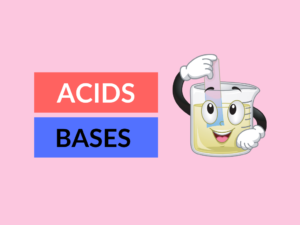Difference between Acidity and Basicity
What is Acidity?
Acidity is a chemical property that describes substances capable of donating protons or accepting electrons. It is typically measured on the pH scale, which ranges from 0 (most acidic) to 14 (most basic/alkaline).
Examples of Acidity
Examples of acidic substances include lemon juice, vinegar, hydrochloric acid, and battery acid.
Uses of Acidity
Acidity has various applications, such as in food preservation, cleaning agents, and chemical reactions in industries like pharmaceuticals and manufacturing.
What is Basicity?
Basicity refers to the chemical property of substances capable of accepting protons or donating electrons. Basic substances have a higher concentration of hydroxide ions (OH-) and a lower concentration of hydrogen ions (H+).
Examples of Basicity
Examples of basic substances include baking soda, ammonia, bleach, and sodium hydroxide.
Uses of Basicity
Basicity is essential in various applications, such as in household cleaning products, water treatment, agricultural practices, and the manufacturing of soaps and detergents.
Differences between Acidity and Basicity
| Difference Area | Acidity | Basicity |
|---|---|---|
| pH Level | 0-6 on the pH scale | 8-14 on the pH scale |
| Hydrogen Ion Concentration | Higher | Lower |
| Hydroxide Ion Concentration | Lower | Higher |
| Donating/Accepting Protons | Donates protons | Accepts protons |
| Accepting/Donating Electrons | Accepts electrons | Donates electrons |
| Common Examples | Lemon juice, vinegar, hydrochloric acid | Baking soda, ammonia, bleach |
| Applications | Food preservation, cleaning agents, chemical reactions | Household cleaning, water treatment, soap manufacturing |
| Effect on Litmus Paper | Turns blue litmus paper red | Turns red litmus paper blue |
| Neutralization Reaction | React with bases to form salts and water | React with acids to form salts and water |
| Feeling/Touch | Sour | Slippery |
Conclusion
In summary, acidity and basicity are chemical properties that describe substances based on their ability to donate or accept protons or electrons. Acidity ranges from pH 0-6, has higher hydrogen ion concentration, donates protons, and includes substances like lemon juice and vinegar. Basicity, on the other hand, ranges from pH 8-14, has higher hydroxide ion concentration, accepts protons, and includes substances like baking soda and ammonia. Their differences extend to their applications, reactions, and the effects they have on litmus paper and our sensory experience.
People Also Ask
Q: What is the difference between acidity and alkalinity?
A: Acidity refers to the presence of an acidic substance, while alkalinity refers to the presence of a basic/alkaline substance. They represent opposite ends of the pH scale.
Q: How does acidity affect our health?
A: Acidity levels in the body can affect digestion, dental health, and overall well-being. Imbalance in acidity can lead to acid reflux, ulcers, and other health issues.
Q: Are acidic substances always harmful?
A: Not necessarily. While some acidic substances may be harmful, there are also beneficial ones. For example, ascorbic acid (vitamin C) and citric acid are essential for our health.
Q: What is the pH of neutral substances?
A: The pH of neutral substances is 7. They neither lean towards acidity nor basicity.
Q: Can the pH of a substance change?
A: Yes, the pH of a substance can change depending on the addition of neutralizers or other acid/base substances that alter its proton or electron accepting/donating ability.


